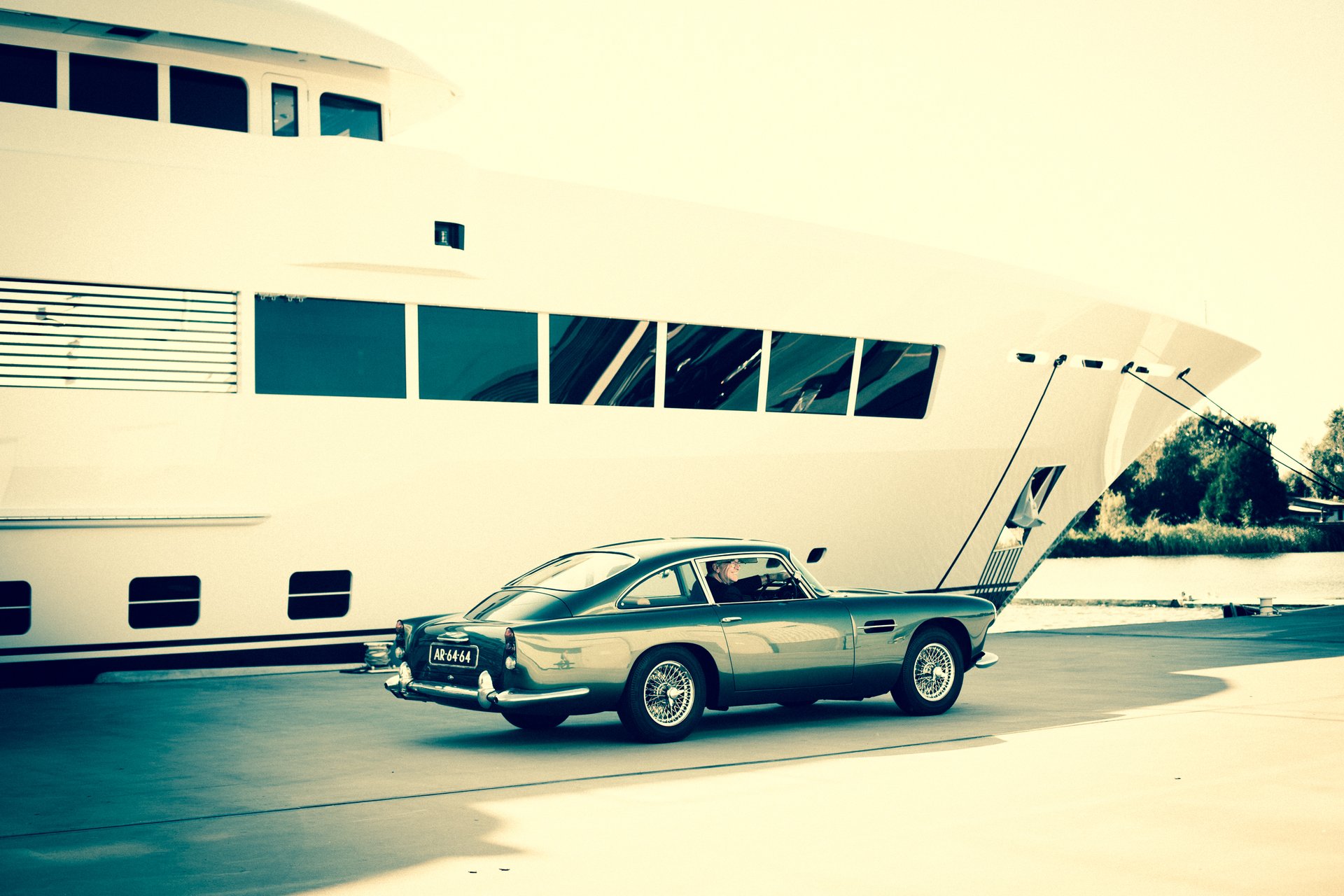‘Good, better, best’

‘Good, better, best’ or Big, bigger, biggest’? While size certainly does matter at Feadship, Henk de Vries insists that it will never be at the expense of quality.
Feadship director Henk de Vries has been known to get a little upset that superyacht magazines (and indeed the wider media) seem so obsessed with size. “It’s like saying a Hummer is more interesting than a Ferrari because it is bigger,” he protests. Nonetheless, Feadship is also about to pass the 100-metre mark and there is more to come. We asked Henk to define where the limits are when it comes to size.
Size, volume and the need to stay efficient.
When Feadship launched Madame GU in 2013 she was the largest superyacht delivered to date in the Netherlands. This record will be broken soon when a 101-metre project currently coming close to completion is launched. However, it is important to make clear that our goal at Feadship is not to compete on size. There are other significantly larger boats out there today but – and you would expect me to say this – they don’t quite match up to Feadship standards. The key question must be whether there is a limit to the size that one can build Feadship quality in? And the answer is yes, although that figure continues to change over time.
Back story
Let’s go back in history a little and see how we got where we are today. Feadship amazed the world in 1978 when it unveiled the 64.64-metre Al Riyadh, a giant yacht for the era which was built for the king of Saudi Arabia. It took quite some time before the leading yards started feeling comfortable with 60-metre boats and it was almost a quarter of a century before Feadship passed this figure with the 65-metre Wedge Too. In 2004 that record was well and truly smashed by the 86-metre Ecstasea as the industry entered a period of enormous demand for 80, 90 even 100-metre yachts. Ultimately there would even be a few yachts well over a hundred metres built by other yards but these were a rarity and, in my opinion, will remain so.
At this point, I would like to stop talking length and focus on a more important measurement, namely volume. From the mid-eighties to the early 2000s, the volumes of the average build effectively increased by fifty per cent. This rise could be supported by natural growth, and the expansion of Feadship’s facilities in 2005 lifted the constraint on the 12-metre beam.
Volume matters
The boats jumped from the previous high of 1,400-1,500 gross tons (GT) to over 2,000 and now 3,000 GT. Rather than taking fifteen years to go fifty per cent larger, we doubled the volume in less than a decade. Madame GU is 2,999 GT while the 101-metre Feadship will come in at 3,321 GT. And although we cannot release any details yet, we will pull off an even higher volume with a project in the not too distant future. The numbers are escalating at an astonishing speed and there has to be a limit given the craftsmanship involved in building these boats.
At Feadship the 3,000 GT barrier has, until recently, been self- imposed. While we had the knowledge, capabilities and capacity to go higher, going above this limit takes one into a different realm. There are two schools of thought here: you go completely commercial or you build a yacht that complies with the far more stringent rules coming from the passenger ship industry. Feadship can build to both requirements.
Which brings us nicely to the all-important issue of efficiency...
The next step
In summary then, Feadship has grown organically to be comfortable with crossing the 3,000 GT barrier. Having reinvented our business model we can build yachts for a lower cost. An important consideration is the fact that a larger boat (say in the low 2,000s instead of 1,200- 1,300 GT) – and taking into account the additional complexity – actually requires more than twice the man-hours. In other words, while you would expect that going larger would mean more efficiency per unit, the line actually curves slightly upwards.
It's like saying a Hummer is more interesting than a Ferrari because it is bigger
Twisting arms
As we have seen, Feadship now uses far fewer man-hours on the same output than it did before the recession and a regular 60-metre boat is less crowded. In principle, our workforce should be a little smaller than a couple of years ago if we were building the same projects, but, of course, we are not. The comfortable position for our people to do the job to perfection is hovering above the 4,000 GT mark.
That said, there is no black and white in custom yachtbuilding. If someone twisted the Feadship director’s arms and insisted on a larger volume we would see if we could achieve some more volume or do some of the work in a more ‘industrial’ fashion. At the moment, Feadship’s limit is in the 4,000 to 5,000 GT range, but considering it was 3,000 GT only six years ago we’ve come a long way. We’re not ashamed to say there is a limit as quality has to be preserved at all costs. We can build larger – the facilities are big enough – and we can bring in subcontractors and put things together in a very cost-efficient way, but this is not what we want to do.
In the meantime, we will continue to hone our knowledge and our craftsmanship. I wouldn’t be surprised if, say six years from now, we are going a step further, although this will never be a goal in itself. Each and every Feadship will continue to reflect the way in which our company relentlessly sets new standards and takes new technologies in its stride as and when they become available. That will always be more important than size.




